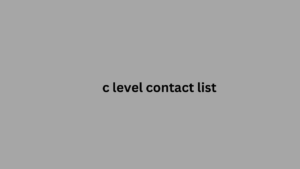If you’re a freelancer or agency offering email marketing services, a well-written email marketing proposal is your gateway to landing new clients. It’s your chance to showcase your expertise, describe your approach, and demonstrate the value you bring to the table. A clear, professional proposal sets the tone for a strong working relationship and builds trust with your potential client.
This article will walk you through the process of creating a compelling email marketing proposal, complete with a step-by-step breakdown and a ready-to-use template.
Why do you need an email marketing proposal?
An email marketing proposal is much more than just a formal document. It serves as a roadmap for your potential client, detailing how your services align with their goals and why you are the best fit for their email marketing needs.
Key benefits of a solid proposal
- Showcase your expertise : Demonstrate your knowledge of email marketing strategies and tools.
- Align expectations : Clearly define objectives, results and schedules.
- Build trust : Provide transparency on costs and processes.
- Increase customer confidence : Help customers visualize the impact of your services.
Write a personalized introduction
Your introduction should immediately grab the customer’s attention and show them that you understand their needs. Highlight:
- A brief summary of the client’s objectives.
- The specific challenges they face with email marketing.
- How your experience can help them achieve success.
Example : “Dear [Client Name],
Thank you for considering [Your Business] for your email marketing needs. After analyzing your current challenges and goals, we have created a comprehensive strategy to improve engagement, increase open rates, c level contact list and boost conversions. Below you will find a detailed outline of our proposed approach.”
3. Define the client’s objectives
Clearly articulate the client’s know the importance of the professional seller goals and demonstrate that you understand quick signs their priorities. Common email marketing campaign goals include:
- Increase email open and click rates.
- Drive traffic to specific landing pages.
- Increase sales or registrations through targeted campaigns.
- Strengthen brand loyalty and customer retention.
4. Define your email marketing strategy
In this section you should explain how you plan to achieve the client’s goals. Be specific and include details such as:
- Target Audience : Describe the demographics and behaviors of your target audience.
- Campaign Types : Describe the types of emails you will send (e.g. newsletters, promotional emails, drip campaigns ).
- Content Strategy : Detail the messages, tone, and topics you will use.
- Automation and Segmentation : Explain how you will leverage segmentation and automated workflows to personalize content.
- Performance Tracking : Describe the metrics you’ll monitor, such as open rates, click rates, and conversions.

